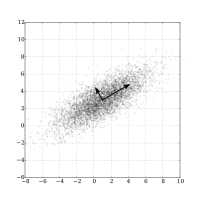
Photo from wikipedia
Abstract Multi-species size spectrum models (MSSMs) have been widely used to investigate and understand the dynamics of marine communities impacted by fishing and environmental changes to support ecosystem-based fisheries management.… Click to show full abstract
Abstract Multi-species size spectrum models (MSSMs) have been widely used to investigate and understand the dynamics of marine communities impacted by fishing and environmental changes to support ecosystem-based fisheries management. The continuous nature of the modelled processes makes it challenging to incorporate periodic biological processes and discontinuous life-history traits into MSSMs; therefore, a discrete multi-species model is needed. We developed a new size-structured matrix model with discrete processes to describe multi-species interactions and energy flows through predation, reproduction, metabolism, and mortality in matrix forms. A framework for assessing the population-level consequences of capital and income breeding strategies was developed, with seasonal properties. Preliminary investigations were conducted on a theoretical community comprising eight interacting species with different reproductive strategies. The utility of our model was demonstrated by showing emergent properties in the seasonal dynamics of marine communities and life-history traits such as survival, growth, and reproduction of capital and income breeders. The model enabled exploration of population dynamics caused by migration at the ecosystem level. An example application of the model in marine protected areas (MPAs), where species undertook seasonal spawning migrations, indicated that the size of MPAs may affect their potential conservation and economic benefits to fisheries. This model has the potential to unravel the relationships between drivers and seasonal dynamics and to assess the effectiveness of fisheries management strategies such as seasonal closure of fishing.
Journal Title: Ecological Modelling
Year Published: 2021
Link to full text (if available)
Share on Social Media: Sign Up to like & get
recommendations!